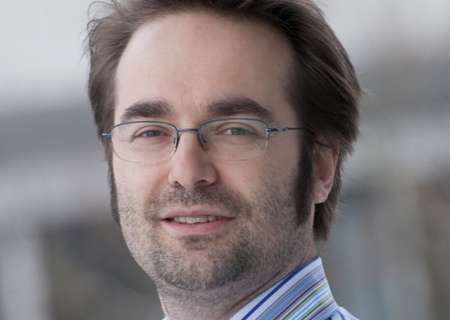Toward quantum technologies

Quantum mechanics is about to fundamentally change the way we can transmit and sense information. The idea is that information—represented by physical quantities such as the spin or the polarisation of an individual photon—can be transmitted with the help of so-called quantum entanglement. The EU project Q-ESSENCE, completed in April 2013, dealt with the development of new communication and sensing technologies based on quantum mechanical principles. Here, project scientist Martin Plenio, director of the institute of theoretical physics and head of the controlled quantum dynamics group at Ulm University, Germany, talks to youris.com about the challenges and applications of quantum mechanics-based communication technologies and what happened since the completion of the project.
Why is quantum mechanics used for developing new communication devices?
About 30 years ago, some scientists proposed that quantum mechanics could be used to create quantum cryptography, a communication approach, which is unconditionally secure. The key difference with other types of cryptography is that we can ascertain that with its quantum version the communication channel is safe. This is because we can detect whether there is someone listening in, and whether someone is trying to extract information.
This characteristic is due to the fundamental property of quantum mechanical systems. At the quantum scale, any measurement that obtains information from them necessarily perturbs the system. We can see this perturbation and thus infer the presence of an eavesdropper. This is fundamentally different to anything that is possible in the classical world, at larger scale. One goal of our research project was making steps towards turning this idea into reality. But it is difficult to put this into practice. So, we needed to create sources for photons. We needed to create detectors. We needed to create interfaces between them. The project was about the technological development of these tools.
What is particularly challenging when developing quantum communication technologies?
The problem is that quantum mechanical systems are very complex. For example, the number of variables you have to use to describe the system grows exponentially with the number of components. So, if you have two components, you have four parameters that you need to know. But if you have 10 components, you have thousand parameters. It grows very rapidly. It becomes impossible to fully describe the system in practice and to fully probe it.
But what we have realised is that the error you make when you leave out some of these parameters is very small; even though we have to describe all these parameters to get an exact description,. But we have to do it in a clever way. After all, we do not want to miss anything important. It turns out, that we can get away with a small number of measurements and characterise the most important aspect of a quantum system. That was a fundamentally new insight.
Could you give an example of a highlight of the project?
Throughout the project, we conducted several key experiments. For example, we realised the first quantum communication between a ground station and a plane moving at 290 km/h at a distance of 20 km. Meanwhile, the group of Anton Zeilinger in Vienna demonstrated the first long-distance—143 km—free-space teleportation between two of the Canary Islands. Individual photons travelled from a source to a detector in the open air. This means in the presence of a lot of light from the environment and also despite fluctuations of the atmosphere. These are key steps towards large-scale quantum communication networks.
Was there any major result sparking further research?
The development of the technologies is continuing. There is a new project, which is called SIQS. This project is picking up on some of the developments of this project and integrating it with the progress of another project called AQUTE. One aspect is using quantum systems for sensing of external fields. Initially, these sensing devices were possible candidates for quantum computers. But that is a long-term goal. However, project members realised that only with a few quantum bits, a few electron spins perhaps, and some quantum mechanical tricks, it might be possible to build the most accurate sensors for magnetic fields.
What we have achieved as part of the new project is to sense the magnetic field emanating from one individual nuclear spin. This is an unbelievably small magnetic field. The goal is to use quantum sensing devices to learn new things about biology. We want to conduct nuclear magnetic resonance experiments on single proteins instead of 1012 proteins, as is done nowadays in conventional nuclear magnetic resonance machines. For example, in the future, we might be able to image individual proteins and their structure and dynamics.
Provided by Youris.com



















